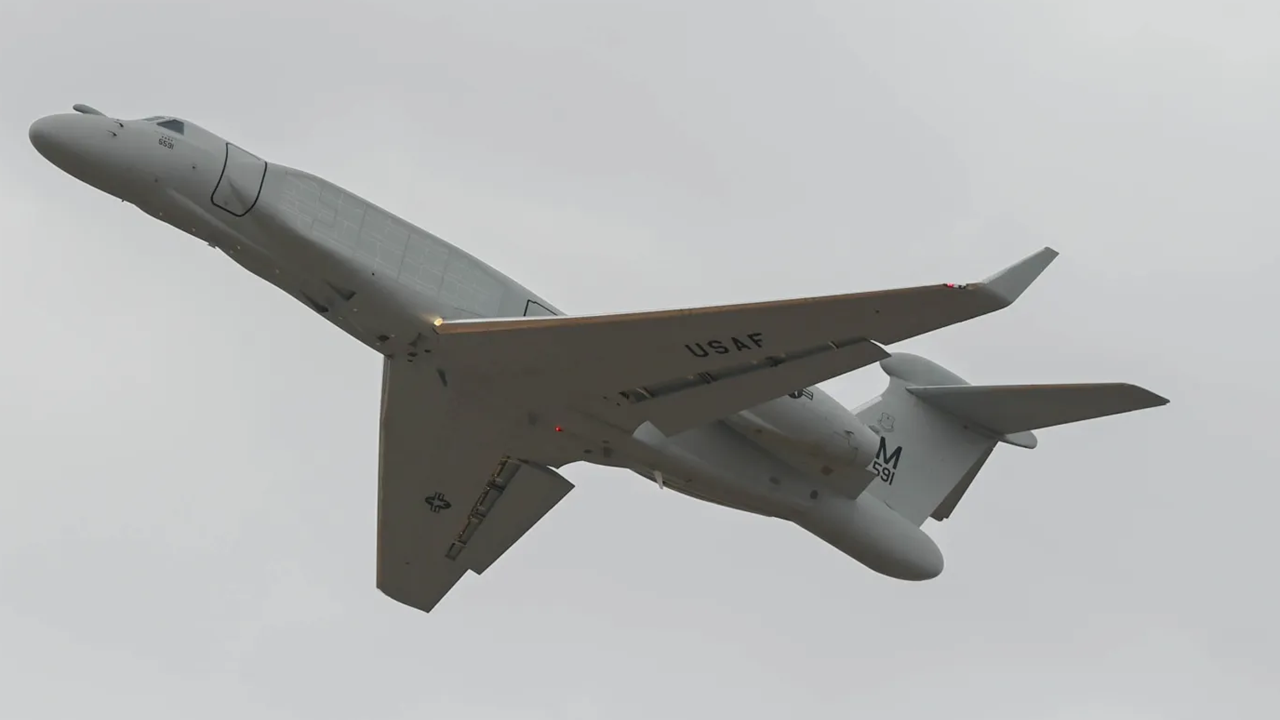
The U.S. Air Force Wants Ten New EA-37B Jets. Why?
The EA-37B’s role is not the sort of thing to capture the public’s imagination. Even so, the plane will serve an important function in the Air Force’s future mission profile.
The Air Force may be considering boosting its order of EA-37B electronic attack aircraft, according to insider sources.
The Air Force is currently slated to buy ten of the EA-37B jets—derivatives of the Gulfstream G550, to replace the aged EC-130H Compass Call fleet. But new studies suggest the ten EA-37Bs may not be sufficient—suggesting instead that as many as twenty EA-37Bs are required. Curiously, the call for an increased orders comes from BAE and L3Harris, the parties responsible for the EA-37B’s electronic equipment and the electronic equipment’s integration, respectively.
“Originally, the Air Force set a requirement of 12 EA-37s. That figure was later trimmed to 10 because of budget pressures,” Air and Space Forces Magazine reported. Now BAE and L3Harris are pressuring the Air Force to boost procurement for a jet that “will perform jamming, electronic attack, suppression of enemy air defense and, potentially, management of Collaborative Combat Aircraft.”
The EA-37B has largely avoided widespread attention. Derived from a jet-setter’s civilian aircraft, the EA-37B is hardly novel or exotic relative to most military aerospace programs such as the B-21 Raider, F-35 Lightning II, or the new F-47 NGAD.
Nor is the scope of the EA-37B program all that impressive. An order for ten aircraft is rather paltry in terms of Air Force procurement standards. And, of course, the EA-37B’s role is not the sort of thing to capture the public’s imagination: electronic warfare is esoteric, with a far less obvious effect than a fighter or bomber aircraft. No one at Top Gun learns to fly an EA-37B.
Even so, the EA-37B will serve an important function in the Air Force’s future mission profile. The new jet will be tasked with disrupting enemy communications, radars, and navigation systems. Moreover, the EA-37B will be able to participate in the Suppression of Enemy Air Defenses (SEAD). In all, the EA-37B should make it harder for U.S. adversaries to operate cohesively, and therefore safer for other U.S. and allied aircraft to operate.
The EA-37B is a modified version of the Gulfstream G550, an elite business aircraft that typically retails for around $60 million. The G550 is not out of production, but the Air Force was able to snag the last handful that were produced new, while the Air Force “zero-timed” other units through inspections and refurbishment. Despite being out of production, the Air Force is counting on the market of “donor candidate” G550s that are typically available.
The EA-37B’s most obvious modification from the G550 is the addition of large antenna arrays conformally mounted on either side of the fuselage. Other modifications include Network Centric Collaborative Targeting (NCCT) systems, System Control and Monitoring subsystems, Radio Frequency Receiver (RFR) subsystems, Software-defined Radio (SDR) subsystems, Counter Radar Assembly, and more.
As the EA-37B comes online, the EC-130H Compass Call will be phased out. The EC-130H, a heavily modified version of the C-130 Hercules, was first delivered to the Air Force in 1982 and has served venerably for over forty years.
About the Author: Harrison Kass
Harrison Kass is a senior defense and national security writer with over 1,000 total pieces on issues involving global affairs. An attorney, pilot, guitarist, and minor pro hockey player, Harrison joined the US Air Force as a Pilot Trainee but was medically discharged. Harrison holds a BA from Lake Forest College, a JD from the University of Oregon, and an MA from New York University. Harrison listens to Dokken.
Image: Wikimedia Commons.